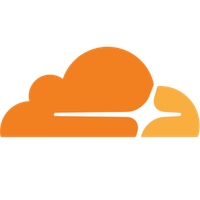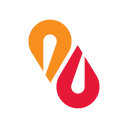
Cloudflare Inc
NYSE:NET


| US |

|
Johnson & Johnson
NYSE:JNJ
|
Pharmaceuticals
|
| US |

|
Berkshire Hathaway Inc
NYSE:BRK.A
|
Financial Services
|
| US |

|
Bank of America Corp
NYSE:BAC
|
Banking
|
| US |

|
Mastercard Inc
NYSE:MA
|
Technology
|
| US |

|
UnitedHealth Group Inc
NYSE:UNH
|
Health Care
|
| US |

|
Exxon Mobil Corp
NYSE:XOM
|
Energy
|
| US |

|
Pfizer Inc
NYSE:PFE
|
Pharmaceuticals
|
| US |

|
Palantir Technologies Inc
NYSE:PLTR
|
Technology
|
| US |

|
Nike Inc
NYSE:NKE
|
Textiles, Apparel & Luxury Goods
|
| US |

|
Visa Inc
NYSE:V
|
Technology
|
| CN |

|
Alibaba Group Holding Ltd
NYSE:BABA
|
Retail
|
| US |

|
JPMorgan Chase & Co
NYSE:JPM
|
Banking
|
| US |

|
Coca-Cola Co
NYSE:KO
|
Beverages
|
| US |

|
Walmart Inc
NYSE:WMT
|
Retail
|
| US |

|
Verizon Communications Inc
NYSE:VZ
|
Telecommunication
|
| US |

|
Chevron Corp
NYSE:CVX
|
Energy
|
Utilize notes to systematically review your investment decisions. By reflecting on past outcomes, you can discern effective strategies and identify those that underperformed. This continuous feedback loop enables you to adapt and refine your approach, optimizing for future success.
Each note serves as a learning point, offering insights into your decision-making processes. Over time, you'll accumulate a personalized database of knowledge, enhancing your ability to make informed decisions quickly and effectively.
With a comprehensive record of your investment history at your fingertips, you can compare current opportunities against past experiences. This not only bolsters your confidence but also ensures that each decision is grounded in a well-documented rationale.
Do you really want to delete this note?
This action cannot be undone.

| 52 Week Range |
97.08
253.3
|
| Price Target |
|
We'll email you a reminder when the closing price reaches USD.
Choose the stock you wish to monitor with a price alert.

|
Johnson & Johnson
NYSE:JNJ
|
US |

|
Berkshire Hathaway Inc
NYSE:BRK.A
|
US |

|
Bank of America Corp
NYSE:BAC
|
US |

|
Mastercard Inc
NYSE:MA
|
US |

|
UnitedHealth Group Inc
NYSE:UNH
|
US |

|
Exxon Mobil Corp
NYSE:XOM
|
US |

|
Pfizer Inc
NYSE:PFE
|
US |

|
Palantir Technologies Inc
NYSE:PLTR
|
US |

|
Nike Inc
NYSE:NKE
|
US |

|
Visa Inc
NYSE:V
|
US |

|
Alibaba Group Holding Ltd
NYSE:BABA
|
CN |

|
JPMorgan Chase & Co
NYSE:JPM
|
US |

|
Coca-Cola Co
NYSE:KO
|
US |

|
Walmart Inc
NYSE:WMT
|
US |

|
Verizon Communications Inc
NYSE:VZ
|
US |

|
Chevron Corp
NYSE:CVX
|
US |
This alert will be permanently deleted.
Cloudflare Inc
In the bustling ecosystem of the internet, Cloudflare Inc. emerged in 2009 with a bold mission: to build a better, safer web. Founded by Matthew Prince, Lee Holloway, and Michelle Zatlyn, the company positioned itself as a formidable guardian of the internet. They aimed to democratize essential internet infrastructure services, ensuring that even the smallest websites could be as secure and fast as the largest enterprises. Cloudflare’s central offering is a global Content Delivery Network (CDN) that distributes web content close to end-users, significantly enhancing website performance and load times. This isn’t all it does, however. The cloud-based platform also provides robust cybersecurity services, including DDoS protection, a critical need in an era where digital threats are constantly evolving.
Cloudflare’s business model is a hallmark of modern SaaS enterprises, where its core revenue is derived from subscription services. The company offers a tiered pricing strategy, allowing users to choose between free basic services and premium features catering to complex needs of businesses. With more than 200 data centers worldwide, Cloudflare uses its vast network as leverage, not only optimizing web performance but also generating analytics and insights for clients. By continually innovating with new services and solutions, the company has expanded its reach from individual developers to some of the world’s largest companies. Cloudflare monetizes by scaling with its customers’ needs, effortlessly integrating additional features such as serverless computing and zero-trust security into its portfolio, fortifying its stature as a linchpin in the digital economy.

In the bustling ecosystem of the internet, Cloudflare Inc. emerged in 2009 with a bold mission: to build a better, safer web. Founded by Matthew Prince, Lee Holloway, and Michelle Zatlyn, the company positioned itself as a formidable guardian of the internet. They aimed to democratize essential internet infrastructure services, ensuring that even the smallest websites could be as secure and fast as the largest enterprises. Cloudflare’s central offering is a global Content Delivery Network (CDN) that distributes web content close to end-users, significantly enhancing website performance and load times. This isn’t all it does, however. The cloud-based platform also provides robust cybersecurity services, including DDoS protection, a critical need in an era where digital threats are constantly evolving.
Cloudflare’s business model is a hallmark of modern SaaS enterprises, where its core revenue is derived from subscription services. The company offers a tiered pricing strategy, allowing users to choose between free basic services and premium features catering to complex needs of businesses. With more than 200 data centers worldwide, Cloudflare uses its vast network as leverage, not only optimizing web performance but also generating analytics and insights for clients. By continually innovating with new services and solutions, the company has expanded its reach from individual developers to some of the world’s largest companies. Cloudflare monetizes by scaling with its customers’ needs, effortlessly integrating additional features such as serverless computing and zero-trust security into its portfolio, fortifying its stature as a linchpin in the digital economy.
Revenue Acceleration: Cloudflare delivered Q3 revenue of $562 million, up 31% year-over-year, marking the second consecutive quarter of accelerating growth.
Large Customer Momentum: The company now has 4,009 large customers (paying over $100,000/year), up 23% YoY, with large customers accounting for 73% of revenue (up from 67% last year).
Net Retention Rebound: Dollar-based net retention rose to 119%, up 5 percentage points sequentially and 9 points YoY, reflecting strong customer expansion.
Profitability: Operating income reached $85.9 million with an operating margin of 15.3%. Free cash flow was $75 million, or 13% of revenue.
Guidance Raised: Full year 2025 revenue is now expected to be $2.142–2.143 billion (up 28% YoY) and Q4 revenue $588.5–589.5 million. Guidance reflects optimism in enterprise pipeline and continued execution.
Leadership Transition: Chief Product Officer CJ Desai is leaving for a CEO role elsewhere. Management emphasized Cloudflare's leadership depth and continued innovation.
AI & Platform Expansion: Management highlighted growing adoption of Workers and AI-related products, including several large platform deals and a strategic focus on shaping the emerging ‘agentic’ AI internet.
































